Ohooen[Korea Quality] / 오후엔[한국관광 품질인증]
11.6 Km 15 2024-01-19
76-28 , Jangbong-ro 26beon-gil, Ongjin-gun, Incheon
+82-32-882-1100
Ohooen is located on Jangbongdo Island, one of the islands closest to the west coast metropolitan area. Ganghwa Island and Seokmodo Island, two of the world's top five mudflats, lie adjacent to one another, so you can participate in mudflat activities such as fishing and digging up clams. The sunset view from May to July is particularly stunning, and you can enjoy it on the room terrace. Furthermore, the spacious yard features a swimming pool with an ocean view and a barbecue, making it ideal for a relaxing getaway.
Sinsimodo Islands (신시모도 (신도ㆍ시도ㆍ모도))
11.7 Km 18020 2023-11-07
Bukdo-myeon, Ongjin-gun, Incheon
Sinsimodo Islands is comprised of the three islands of Sindo, Sido, and Modo. Referred to as brother islands, visitors can explore all three islands in one day on bicycle thanks to bridges that connect the islands together. Attractions on the islands include Gubongsan Mountain, Haedanghwa Dulle-gil Trail, Sugihaebyeon Beach, Baemikkumi Sculpture Park, and more. Gubongsan Mountain, located on Sindo Island, features a forest trail that is easy to walk on, making it easy to enjoy the azaleas and cherry blossoms that bloom each spring. Baemikkumi Sculpture Park, featuring artworks of Lee Ilho before the background of the sea, is especially popular among couples.
Goryeosan Mountain (고려산)
11.8 Km 32423 2020-04-27
Gocheon-ri, Ganghwa-gun, Incheon
+82-32-930-3515
Goryeosan Mountain, once referred to as Oryeonsan, is a mountain rich in folklore. Legend has it that in the year 416 (during the reign of King Jangsu of Goguryeo), a Buddhist monk named Cheonchukguk climbed Goryeosan Mountain and found Oryeonji Pond where the five-colored lotus flowers bloomed. The monk picked the lotus flower petals and blew them into the air. He then built a temple where each of the petals had landed, naming the temples according to their corresponding color: Jeokseoksa Temple, formerly Jeokryeonsa Temple (red lotus), Baengnyeonsa Temple (white lotus), Cheongryeonsa Temple (blue lotus), Hwangryeonsa Temple (yellow lotus), and Heungnyeonsa Temple (black lotus).
Around 130 dolmens are distributed along the foot of Goryeosan Mountain. Sirumisan Mountain, on the northern side of Goryeosan Mountain is said to have been the birthplace of General Yeongaesomun of the Goguryeo Kingdom.
Ganghwa Deokjinjin Fortress (강화 덕진진)
11.8 Km 29242 2020-03-16
34, Deokjin-ro, Ganghwa-gun, Incheon
+82-32-930-7074
Deokjinjin was the key strategic point of the outer castle wall used for defending the Ganghwa Straits during the Goryeo dynasty (918-1392). It was originally a military camp commanded by an official with the rank of Cheomsa under the command of the Korean naval base. In 1677, an official with the rank of Manho was assigned to this camp along with 26 military officials, 100 soldiers, 2 battle ships, and other military equipment. In 1679, the Namjangpodae and Deokjinpodae batteries were stationed here.
Deokjinjin Camp was the scene of fierce battles that took place during Byeonginyangyo (the French invasion in 1866) and Shinmiyangyo (the American invasion in 1871). The battlements and gatehouse of Deokjinjin that had all been destroyed during Sinmiyangyo were restored in 1977. At the Namjangpodae Battery, cannons used by the Joseon military have been reproduced and installed for display.
Baemikkumi Sculpture Park (배미꾸미조각공원)
12.5 Km 1718 2016-10-28
41, Modo-ro 140beon-gil, Bukdo-myeon, Ongjin-gun, Incheon
+82-32-752-7215
Baemikkumi Sculpture Park rests on Modo Island, one of the nearest islets to Yeongjongdo Island where Incheon International Airport is located.
The name 'baemikkumi' comes from the local dialect, as people say the island resembles the shape of a hole normally seen from the bottom of a ship as 'baemit' translates to the bilge, and 'kkumi' is most closely translated to mean 'a hole' in English.
The entire island has now become a beautiful exhibition hall of art works thanks to sculptor Lee Il-ho, who originally started and donated his talents for visitors coming to the island. The art displayed on the island makes for an inspiring contrast to Seohae (west sea, or yellow sea) in the background.
Ganghwa Seonwonsa Temple Site (강화 선원사지)
12.5 Km 12516 2022-09-19
222, Seonwonsaji-ro, Ganghwa-gun, Incheon
+82-32-933-8234
Ganghwa Seonwonsa Temple Site was first discovered in 1976 during a surface examination around Ganghwado Island undertaken by the Ganghwado Island Academic Research Team of Dongguk University. The site was designated as Historic Site No. 259 in 1977. Seonwonsa Temple was built by General Choi Wu in 1245 (the 32nd year of King Gojong’s reign during the Goryeo dynasty), which was right after the transfer of the capital to Ganghwado during resistance against the Mongolian invasion.
The temple was meant to be a spiritual mainstay in fighting against Mongolia. It used to be one of the two largest temples in Korea along with Songgwangsa Temple. However, the temple was completely destroyed during the early Joseon era, leaving only the site itself. The famous wood blocks of Palman Daejanggyeong (the Tripitaka Koreana), currently housed in Haeinsa Temple at Hapcheon, are said to have been originally stored in Seonwonsa Temple. It is believed that the carved wood blocks were taken from Seonwonsa to Heungcheonsa Temple during the Joseon era and again moved to Haeinsa Temple during the reign of Sejo.
Located on a mountain slope, the presumed location of the building site extends 250 meters from south to north and 170 meters from east to west.
Donggeomdo (Trail, Campground, Art Cinematheque) (동검도(나들길,캠핑,예술극장))
12.6 Km 0 2024-02-20
60 Donggeom-gil 63beon-gil, Gilsang-myeon, Ganghwa-gun, Incheon
Donggeomdo Island is a petite island connected to the main island of Ganghwado Island, celebrated for its stunning tidal flats and coastal vistas. A stroll along the trail on the eastern coast of the island offers visitors a chance to savor diverse natural landscapes, while the scattered campgrounds provide a romantic setting for leisure activities. Notably, the DRFA365 Art Cinematheque, featuring art films, adds to the island's charm and attractions.
Ganghwa Chojijin Fortress (강화 초지진)
12.6 Km 29729 2021-02-10
58, Haeandong-ro, Ganghwa-gun, Incheon
+82-32-930-7072
Chojijin Fortress is believed to have been built in 1655 (6th year of King Hyojong) for the purpose of national defense against coastal attacks from foreign enemies based on articles regarding the construction of Chojijin Fortress. The fortress was the scene of many hard-fought battles including the invasions of America and Japan in the 1870s. The site was then taken by the foreign troops due to the inferior fighting power of the Korean military, and very nearly completely destroyed. In 1876 (13th year of King Gojong), the Japanese warship Unyangho invaded and forced the Joseon Kingdom to open their ports, which later led to the forced signing of the Jana-Korea Treaty of 1876. Only the base of the fortress and the site of the high ground remained until 1973, when restoration work was started. The patriotic spirit of the Joseon dynasty still remains in this historic site.
Gwangseongbo Fortress (광성보)
12.6 Km 35069 2022-07-25
27, Haeandong-ro 466beon-gil, Ganghwa-gun, Incheon
+82-32-930-7070
Gwangseongbo Fortress’s outer wall from the Goryeo era was mended in 1618. The fortress was built in 1656 and the outpost was constructed in 1679. It was completely remodeled into
a masonry castle with gates in 1745. During Sinmiyangyo (the American invasion in 1871), Gwangseongbo was the fiercest battle ground in Ganghwa. On April 24, 1871, a
fleet with 1,230 American naval forces led by Rear Admiral John Rodgers landed on Ganghwado Island to demand the
opening of Korea's ports and commerce. The armed forces attacked Chojijin Fortress
and Deokjinjin Camp, then marched to Gwangseongbo Fortress, where they engaged in close combat with the warriors of Joseon. Although General Eo Jae-yeon and the other warriors were poorly equipped with far inferior weapons, they bravely fought to the
death against the invading forces.
The battlefield ruins of the fortress and the gate towers such as Anhaeru, Gwangseongdon, Sondolmokdon, and Yongdudon were repaired
in 1977. The twin tombs of General Eo Jae-Yeon and his brother Eo Jae-seon, along with the anonymous tombs of warriors who died on the battlefield were
also honorably arranged at the same time. Furthermore, a stone monument commemorating the restoration of Ganghwa Battlefield was erected on Yongdudondae Post.
In 1988, an extensive rest area was created toward the shore for visitors’ convenience. Gwangseongbo Fortress is presently designated as Historical Relic No. 227. A religious service known as Gwangseongje is held annually to commemorate the patriotic spirits of General Eo Jae-yeon and other unnamed warriors. This service takes place at 11 a.m. on every April 24th of the lunar calendar.
Ganghwa Ginseng Department Store [Tax Refund Shop] (주식회사 강화인삼백화점)
12.8 Km 0 2024-04-22
2F, 10, Hoenamu-ro 42-gil, Yongsan-gu, Seoul
-
![Ohooen[Korea Quality] / 오후엔[한국관광 품질인증]](http://tong.visitkorea.or.kr/cms/resource/12/2813512_image2_1.jpg)
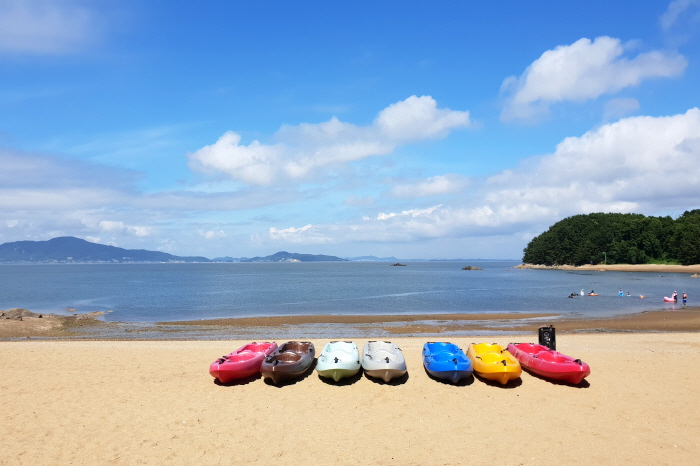

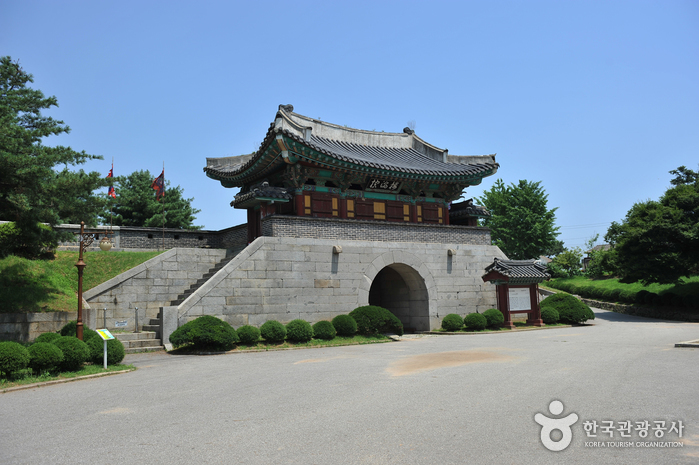

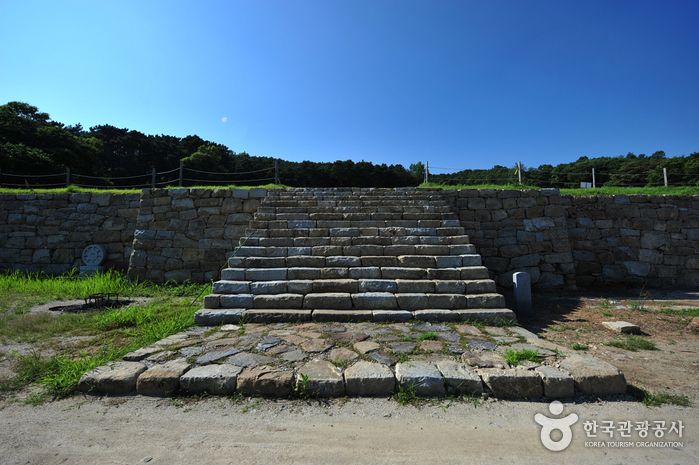
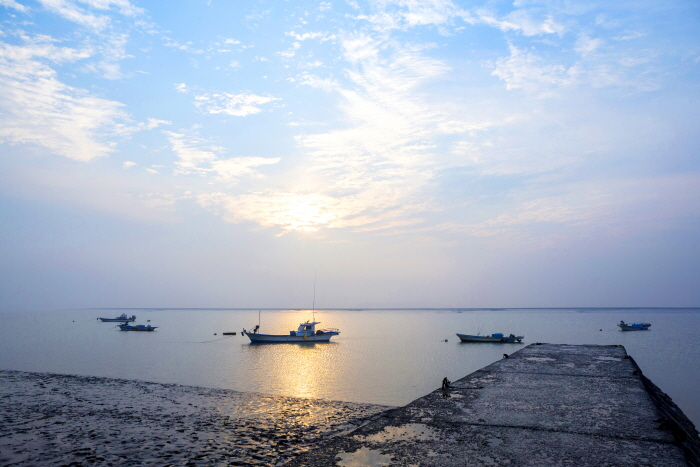
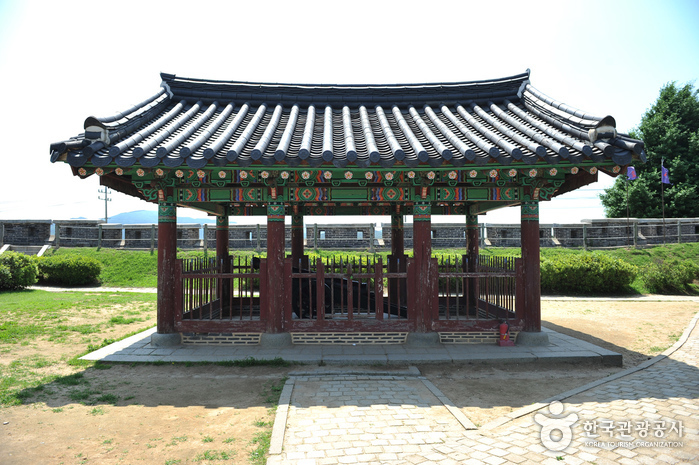
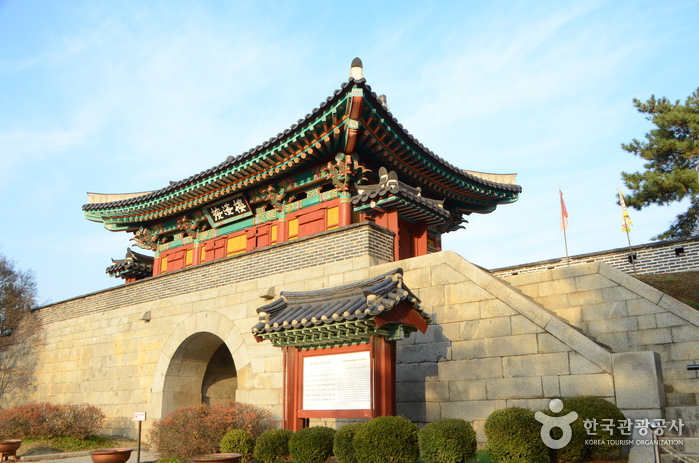
![Ganghwa Ginseng Department Store [Tax Refund Shop] (주식회사 강화인삼백화점)](http://tong.visitkorea.or.kr/cms/resource/91/2882891_image2_1.jpg)
 English
English
 한국어
한국어 日本語
日本語 中文(简体)
中文(简体) Deutsch
Deutsch Français
Français Español
Español Русский
Русский